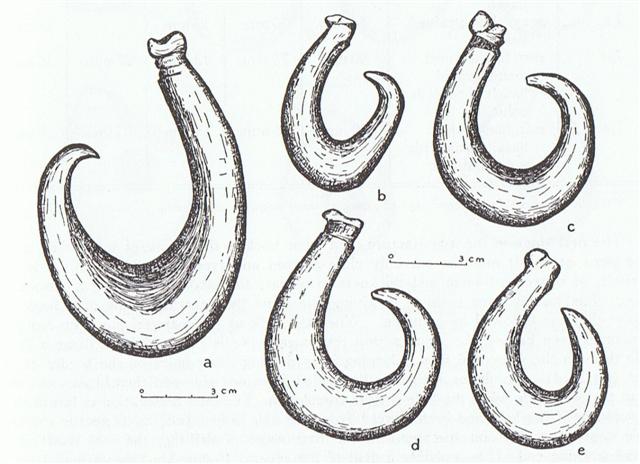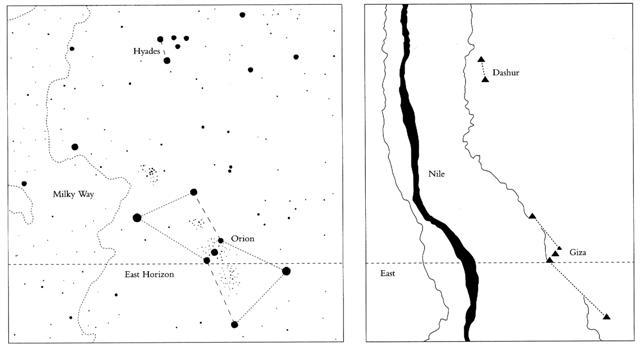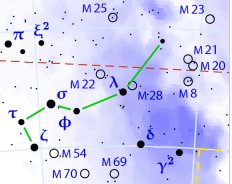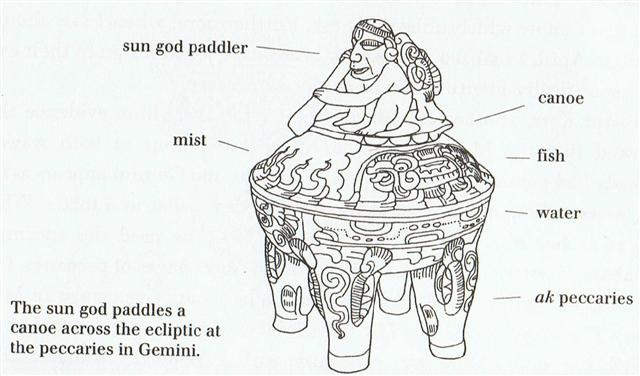After combining the pair of fishhooks at Sirius - one heliacal at the time of Gregory XIII and the other nakshatra in Roman times - it should be natural to let Sirius return again as heliacal, but now updated to living time (the rongorongo present):
The day when Sirius and the Sun rose together was possible to deduce from looking in the night at the face of the Full Moon against the well ordered background of the stars (the nakshatra method):
When in Roman times Sirius was visible at the Full Moon (in 'June 30) it was known that the Sun would have reached the Dolphin constellation, where the last of the Three Stars (Tau-toru) culminated at midnight, together with ζ Tauri. and α Columbae.
... Menkaure was allegedly a much more benevolent Pharaoh than his predecessors. According to legends related by Herodotus, he wrote the following: This Prince (Mycerinus) disapproved of the conduct of his father, reopened the temples and allowed the people, who were ground down to the lowest point of misery, to return to their occupations and to resume the practice of sacrifice. His justice in the decision of causes was beyond that of all the former kings. The Egyptians praise him in this respect more highly than any other monarchs, declaring that he not only gave his judgements with fairness, but also, when anyone was dissatisfied with his sentence, made compensation to him out of his own purse and thus pacified his anger. The Gods however ordained that Egypt should suffer tyrannical rulers for a hundred and fifty years according to this legend. Herodotus goes on: An oracle reached him from the town of Buto, which said 'six years only shalt thou live upon this earth, and in the seventh thou shalt end thy days'. Mycerinus, indignant, sent an angry message to the oracle, reproaching the god with his injustice - 'My father and uncle,' he said 'though they shut up the temples, took no thought of the gods and destroyed multitudes of men, nevertheless enjoyed a long life; I, who am pious, am to die soon!' There came in reply a second message from the oracle - 'for this very reason is thy life brought so quickly to a close - thou hast not done as it behoved thee. Egypt was fated to suffer affliction one hundred and fifty years - the two kings who preceded thee upon the throne understood this - thou hast not understood it'. Mycerinus, when this answer reached him, perceiving that his doom was fixed, had lamps prepared, which he lighted every day at eventime, and feasted and enjoyed himself unceasingly both day and night, moving about in the marsh-country and the woods, and visiting all the places he heard were agreeable sojourns. His wish was to prove the oracle false, by turning night into days and so living twelve years in the space of six ...
At the time of Gregory XIII - and according to his new calendar - it was the star Nunki (σ) in Sagittarius which was at the Full Moon when the Sun reached the last day in ░June. It indicated that Land was in front for the Sun, because Water was in front for the Full Moon: ... This [σ] has been identified with Nunki of the Euphratean Tablet of the Thirty Stars, the Star of the Proclamation of the Sea, this Sea being the quarter occupied by Aquarius, Capricornus, Delphinus, Pisces, and Pisces Australis. It is the same space in the sky that Aratos designated as Water ...
4 precessional days after Gregory XIII - at the time of rongorongo - day 364 had advanced to φ Sagittarii.
... The South Dipper is a part of the Sagittarius constellation which resembles the Big Dipper in Ursa Major:
This was 9 days after the solstice, i.e. 9 days after the Battle of the King:
Gregory XIII had launched his new calendar in its day 288 (░October 15) and at the time of Bharani (the Place for Birth) the Sun had risen with Antares in day 288 ("October 15). 288 (= 2 * 144) could have been a Sign for where a new time cycle should begin. It was 'even-time', a time at the horizon.
Gregory had adjusted the calendar of Julius Caesar just enough to get Nunki 284 (= *288 - 4) days after his 0h (░March 21). 80 + 284 = 364. ... Ecclesiastically, the equinox is reckoned to be on 21 March (even though the equinox occurs, astronomically speaking, on 20 March in most years) ... But at the time of rongorongo the precession had moved Nunki (and the other fixed stars) ahead with 4 days in relation to the dates of the Gregorian calendar and Nunki was now 288 days after 0h and too late for the end of the year as defined by the Pope.
However, instead of the 't(ea)-water in the Tea Pot of Sagittarius' the South Dipper could now be imagined as the source for the Water - over which the tribute canoe to Lono could sail.
|
|||||||||||||||||||||||||||||||||||||||||||||||||||||||||||||||||||||||||||||||||||||||||||||









